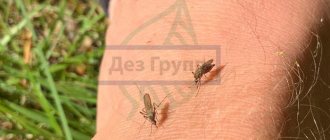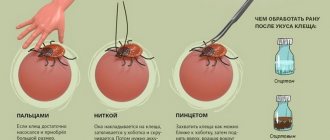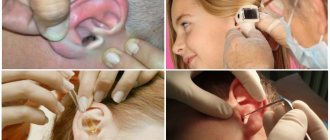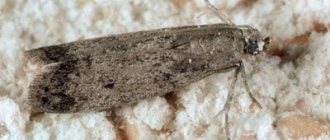In October 2022, a student from Congo, who studies at a Moscow university, sought medical help with a cockroach in her ear. It crawled into her ear at night while she was sleeping. The student lived in a dormitory that was characterized by the presence of a large number of insect pests and parasites. This case provides a clear answer to the question of whether a cockroach can get into the ear. And he is far from the only one.
Here are a few more similar incidents:
- in 2022, at night a cockroach got into the ear of a Florida resident, which doctors could not get out for more than a week;
- in 2022, a 13-year-old teenager from the Tver region crawled into his ear and was successfully removed by medical workers;
- At night, a cockroach made its way deep into the ear of a 10-year-old girl, which doctors were able to remove in two stages - with tweezers and washing out the injection with a powerful stream of water.
It should be noted that most of these situations occur in dormitories or apartments where hordes of insects are running around. Prussians, midges, and small bugs crawl into the nose and ears when they are looking for a safe and comfortable place. It should be warm, dark, with a sufficient level of humidity and difficult for humans to access.
If there are few cockroaches in the room, then they will find a more suitable place for nesting and, most likely, will not be “interested” in the human auricle. But this event cannot be completely ruled out. Prussians can crawl into your ear by accident. In addition, insects can wait for the victim not only at home, but also in the country, in a kindergarten or camp, in nature, in a hotel with unsatisfactory sanitary and hygienic conditions.
In the article we will talk about what to do if a cockroach gets into your ear, how and why it should be removed as quickly as possible.
How to tell if a cockroach has crawled into your ear
If a cockroach gets into your ear, it is impossible not to notice. Children are especially sensitive to such cases.
The following symptoms suggest that a German or other insect has entered the ear:
- serious discomfort;
- sharp pain in the auricle and in the temporal region, which over time can become aching;
- whistling, clicking, or noise in the ear;
- sensation of insect movement;
- congestion of the ear canal;
- in the presence of pathologies and diseases of the hearing organs, disturbances in the functioning of the vestibular apparatus, nausea and vomiting, and involuntary muscle contractions cannot be excluded.
If the cockroach has crawled shallowly, you can see a small dark spot in the ear - the hind limbs and part of the insect's abdomen.
Can an insect get out on its own?
If an insect crawls into your sleeping ear, then once there, the cockroach gets stuck and cannot come out on its own. In some cases, if an insect crawls into some hole in the human body, it can live, for example, in one ear for a week without food or water. Almost always in such a situation, a person tries to clear the ear canal and, therefore, kills the cockroach.
This can lead to a ruptured eardrum or serious infection. Experts recommend that you immediately consult a doctor if you experience discomfort in the ear; there is no need to do anything on your own at home.
How to get a cockroach yourself
When an insect is discovered in the ear canal, most people experience fear and panic. And this is not surprising: few people know what to do if a cockroach gets into their ear.
Doctors do not advise trying to remove the Prussian dog from the ear on your own, even if it has crawled shallow. Such amateur activities usually only complicate the situation.
Let us point out two clear examples when an attempt to remove a cockroach on your own ended extremely unsuccessfully:
- The girls wanted to get the Prussian on their own, but they only scared him. He crawled even deeper;
- A resident of the United States tried to get a cockroach with tweezers, but in the end she only removed the hind limbs and part of the body.
The victim's task is to kill the insect. To do this, just drop a few drops of sunflower or olive oil into your ear. Next, you should immediately seek qualified medical help.
But not all victims have the opportunity to use the services of specialists. In this case, it is necessary to drip oil into the ear, wait until the insect dies and carefully remove the individual with treated tweezers. After this, the ear canal should be treated with hydrogen peroxide. If you have diseases or pathologies of the hearing organs, you should never remove insects yourself.
Self extraction
Obviously, you don't want a cockroach to stay in your ear. In addition to pain and discomfort, it can damage your ear canal and eardrum, which can lead to infection or hearing loss. Therefore, it is important to remain calm. While the words “cockroach in your ear” may not sound like much, if you start thrashing around, running around, sticking something in your ear, trying to remove it yourself, this can cause the cockroach to move around and cause more damage. Oh, and don't spray insecticide in your ear or hit your ear with a fly swatter. The first sprays potentially harmful chemicals into your ear and face. The last one is just stupid.
Instead, see if you can shake the bug out of your ear by tilting the affected ear down and shaking your head slightly. If this succeeds, and you forced the cockroach to crawl out, then make sure that it was a whole cockroach and there was nothing left. If the cockroach cannot get out easily and is still alive, try applying a few drops of mineral or vegetable oil to the ear canal to kill the insect. Rinsing your ear thoroughly with warm water can help remove the dead cockroach from your ear. Trying to remove a cockroach yourself using tweezers or other tools can be risky as you may damage the ear and push the cockroach further into the ear. Therefore, if a cockroach does not come out of your ear, talk to your doctor as soon as possible. Also, if there is any concern that any parts of the cockroach remain in your ear, consult a doctor.
Hearing restoration measures
Spontaneous recovery occurs in 32-79% of cases, usually within the first two weeks.
- What to do if you have a blown ear: symptoms and treatment at home
If inflammation begins after a cockroach gets into the ear, then it is important to know that an infection in the ear causes an inflammatory process that causes swelling of the mucous membrane and eardrum, forming erosions and ulcers on the walls. As the disease progresses, the inflammatory process affects all parts of the middle ear, and otitis media becomes acute. It can also spread to adjacent tissues, the inner ear and the cranial cavity, leading to meningitis. When both ears are inflamed, there is unilateral and bilateral purulent otitis.
If the disease is not treated, it can become chronic. In patients with chronic purulent otitis, periods of remission alternate with exacerbation of the disease. His treatment is longer and more complex. It is divided into mesotympanitis (if only the mucous membrane is affected) and epitympanitis (inflammation covers the bones). The first appearance is relatively calm and can be treated with conservative methods. With epitympanitis it is much more difficult, since there is a danger of spreading to brain tissue.
Hearing treatment is always carried out strictly individually under the supervision of a doctor. Any amateur activity can lead to serious irreversible consequences.
When only a doctor can help
If the insect has penetrated deep into the ear canal, or independent attempts to remove it have not yielded results, then the only way out is the help of an ENT doctor.
Experienced medical professionals know how to remove a cockroach from your ear as quickly and safely as possible. Depending on the situation, they will select the optimal therapeutic methods.
Usually there are no problems, and the operation takes 15-20 minutes if the insect is intact and has not been damaged. If they first tried to get the Prussian on their own and dismembered it into several small pieces, then it will take 30 or more minutes to extract them.
Medical workers use special instruments. If the insect has penetrated very deeply, then it is washed out with a powerful stream of water from the injection.
note
The sooner the victim seeks help, the less likely it is to develop complications. You should not hope that the Prussian will crawl out of the ear on its own. He physically will not be able to turn around in the narrow ear canal, and he does not know how to move in reverse.
The danger of cockroaches in the ear
Many people believe that the insect reaches the brain through the ear canal. This is not true. The human ear has a special structure, so barbels do not penetrate beyond certain limits.
As soon as the pest gets into a tight space in which it is difficult for him to move, he makes attempts to get out. At the same time, it comes into contact with soft tissues and the eardrum. Every movement is accompanied by pain. With their sharp wings, males damage soft tissues. This leads to bleeding.
Another difficulty lies in the fact that the pest cannot get out of the trap on its own. To get it, you need to perform certain actions.
This problem is encountered much less frequently by those people who carry out preventive measures:
- Clean your apartment or house from insect pests. To do this, chemicals and folk remedies are used.
- If you need to spend the night in a tent, cover your ears with a hat or bandage. It is also possible to use products that repel pests.
Cockroach extermination company services
The best way to protect yourself and family members from attacks by cockroaches is to prevent them from appearing in the house, and if pests are detected, promptly begin extermination measures. Getting rid of Prussians on your own is not an easy and not always solvable task due to the high resistance of individuals to pesticides. Cockroach oothecae are not at all susceptible to insecticides.
The sanitary service "Des Group" offers residents and enterprises of Moscow and the Moscow region services for treating premises from cockroaches. Exterminators go to apartments and country houses, to commercial facilities of any profile.
Calculator
Prevention measures
In order to avoid such problems, you need to fight against domestic insects and prevent them from becoming widespread in the apartment. Small children need to wear thick hats at night to protect their ears. For adults, earplugs or simple pieces of cotton wool in their ears will help.
When hiking, it is necessary to ensure that the tent is airtight. Along the perimeter you can lay out aromatic herbs that cockroaches, ants, and other insects cannot tolerate, for example, tansy (fresh or dry).
No need to eat in a tent. Teach children that this is a place to rest at night. If there is no food, the insects will not come.
The main method of prevention remains getting rid of cockroaches. There are many ways to say goodbye to these domestic parasites forever. They are not only unpleasant to look at, but are carriers of dangerous diseases - tetanus, dysentery, lichen, salmonellosis, urogenital viruses.
Recovery process
What to do after removal? The cockroach got into the ear, it was successfully removed, what next? And then you need to carefully monitor your condition. When extracting it yourself, you need to make sure that the insect is intact. All the legs and wings are in place, there is absolutely nothing left in the ear. However, just in case, it is highly recommended to make an appointment with an otolaryngologist.
It is worth understanding that after pulling out, unpleasant feelings of both a physiological and emotional nature may appear. These include vomiting, dizziness, and a feeling of pressure in the ear. Especially often, these signs are observed after suction or rinsing. After medical operations, you need to avoid intensive rest, sudden movements and various significant physiological stresses.
For 3-5 days after extraction, it is necessary to monitor whether suppuration has appeared. The cockroach could introduce an infection that develops over time. If you suspect an infection, you should definitely visit an ENT specialist. Signs of infection may include: high fever, redness, aching pain, dizziness, swelling and difficulty hearing.
Allergy
The chitinous cover, excrement, and remains of these insects are mixed with house dust and become a source of allergic reactions in humans. If they enter the respiratory tract, skin or stomach of a person, they can cause the following allergic reactions:
- Skin dermatitis.
- Conjunctivitis.
- Rhinitis.
- Asthma.
Symptoms of a cockroach allergy. Constantly in contact with insects in your own home, a person suffers from chronic allergies. As a result, he constantly sneezes and experiences pain in his eyes and nose. At the same time, black cockroaches emit a strong odor , which, even in the absence of allergies, can cause a lot of unpleasant moments.
If you were bitten
do not attack people without special reasons .
But if there are no open sources of food and water in the house, they try to extract them from the human body.
When there are many individuals in the house, they do not have enough food, and they begin to feed on the human body.
A cockroach bite is similar to most insect bites. After some time, a seal appears in its place, which begins to itch very much , a burning sensation and tingling appear.
Bites are dangerous due to the possibility of allergies and wound infection . Often the wound becomes inflamed due to viruses that have entered it. The delicate skin of children especially suffers from this. Most of all they love to chew the skin on the fingers and toes , and the areas around the lips, eyelids, elbows and knees. The bite sites begin to itch and become inflamed.
IMPORTANT! Cockroach bites must be treated, otherwise severe inflammatory processes may develop in their place.
How dangerous are cockroaches to humans?
Let's take a closer look at the harm of cockroaches to people.
It is a mistake to believe that “mustachios” are only a purely externally unpleasant phenomenon. They are carriers of many dangerous diseases . Their very way of life indicates that on their paws they can carry harmful bacteria and a huge number of pathogenic microbes.
Pests look for their food in trash cans, basements, and sewers. All microorganisms and bacteria linger on their furry paws . And after that they begin to explore all corners of your apartment, crawling on dishes and kitchen tables.
And even if you do not observe insects in a mug or glass at the moment, they have already managed to settle microbes on them that can become a source of serious infectious diseases.
What diseases are carried:
- Salmonellosis.
- Meningitis.
- Mycobacteriosis.
- Gastroenteritis.
- Dysentery.
- Urogenital viruses.
- Lichen.
- Tetanus.
- Infectious hepatitis.
Black species can infect you with helminths : pinworms, roundworms, tapeworms, whipworms. Red cockroaches can also become a source of worms. Moreover, the ways of spreading diseases can be very different. They can leave parasite eggs on any objects that you touch with your hands. Therefore, it is very important to take measures to prevent the spread of insects in your home.
The total number of microbes and viruses they carry, according to scientists, is more than a hundred.
The result of proximity to them is infectious diseases. At the same time, the person mistakenly believes that he caught the virus in transport or a public place, but in fact he fell ill in his own apartment, just by touching things on which the “uninvited guest” had previously crawled.











